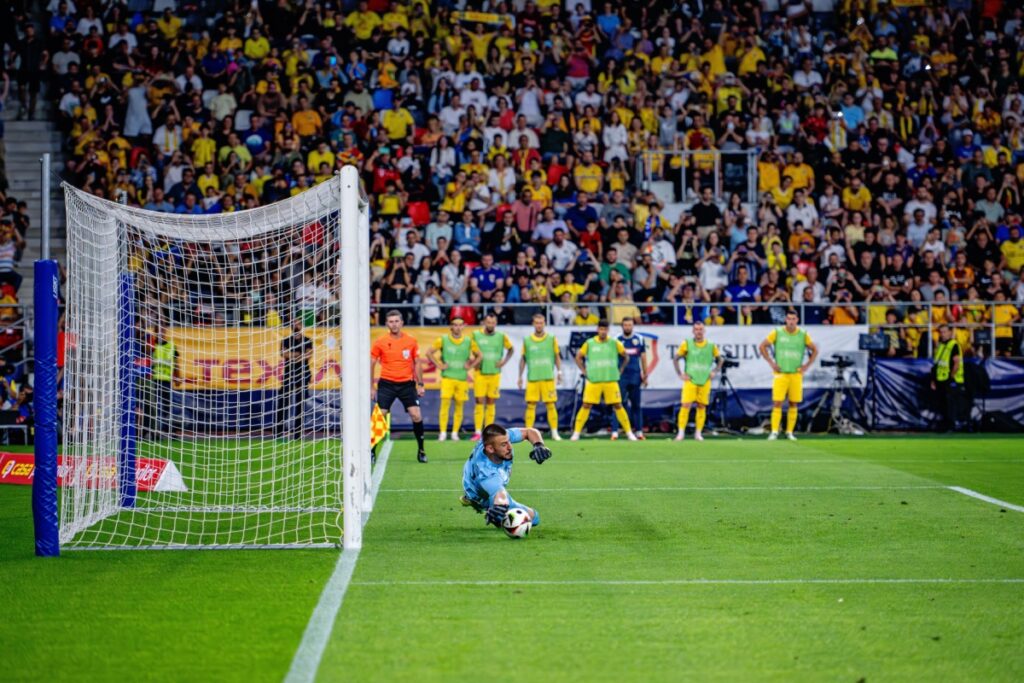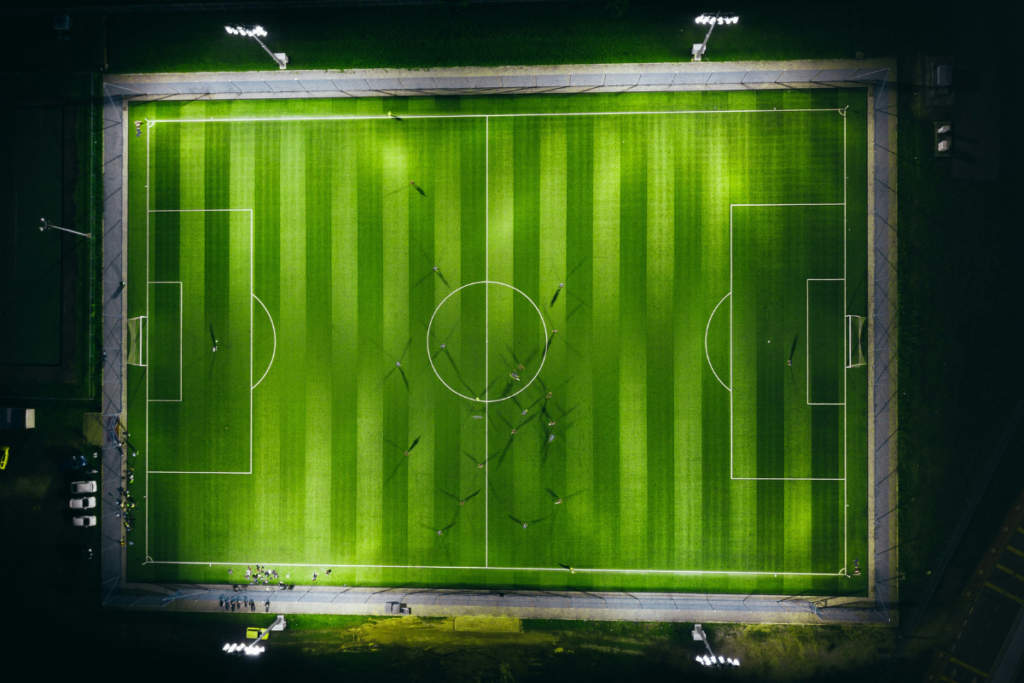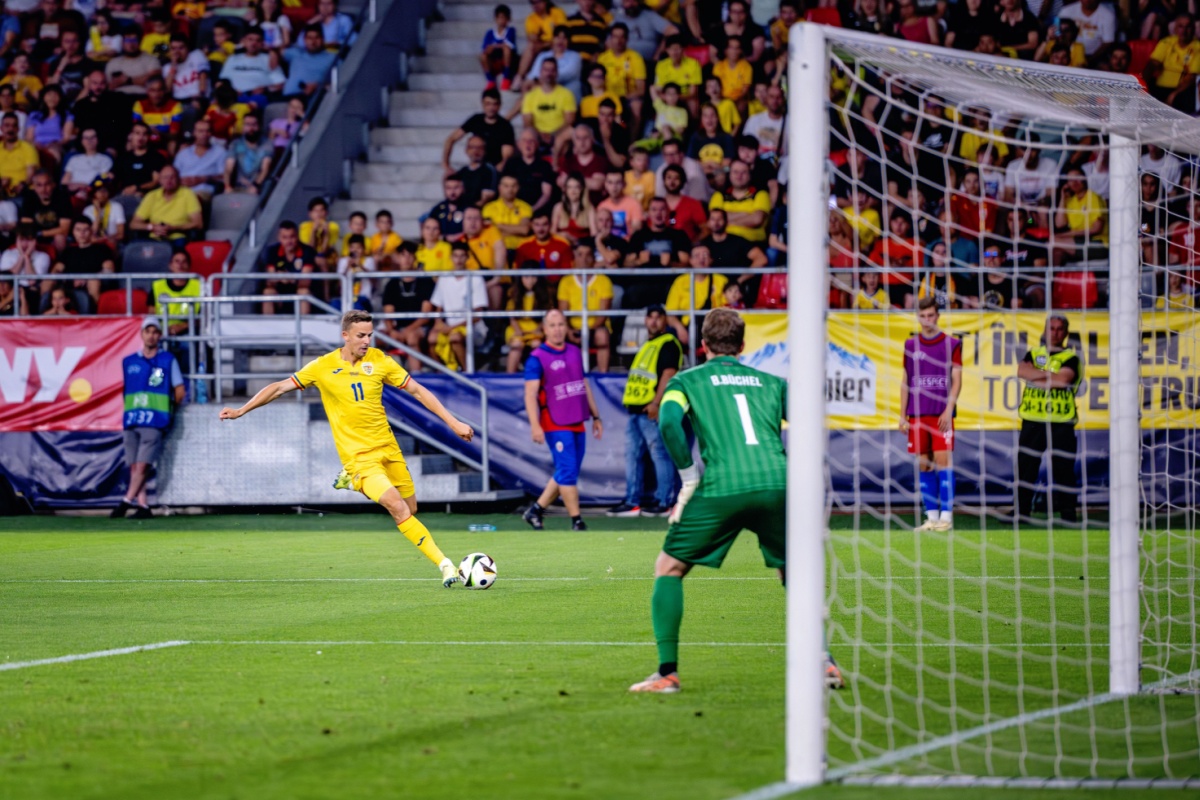Whether you’re new to the field or just curious about how it all works, this guide will help you understand the basics of soccer!
Soccer is the world’s most popular sport, and its global appeal is undeniable. Soccer is a sport that’s easy to fall in love with, whether you’re playing in a local league, cheering on the Socceroos, or watching the FIFA World Cup. While it might seem complex at first, with a bit of guidance, you’ll find that soccer is both straightforward and incredibly exciting.
So, let’s break down the essentials you need to know about soccer, from basic rules and positions to key terminology and fundamental skills.
Equipment Needed to Play Soccer
To start playing soccer, you’ll need:
- A soccer ball
- A pair of boots (cleats)
- Shin guards
- A pitch (field with goals at each end)
- Team kit (jersey, shorts, and socks)

Soccer ball in goal net. Photography by Igor Link via Shutterstock
Team Formation
Soccer is played with two teams, each consisting of 11 players on the field at any one time. The team that scores the most goals by the end of the match wins.
Here are the main positions and their roles:
- Goalkeeper: The only player allowed to use their hands (within their penalty area), the goalkeeper’s primary job is to prevent the opposing team from scoring.
- Defenders: Positioned in front of the goalkeeper, defenders’ main job is to stop the opposing team from getting close to the goal.
- Centre-backs: These players guard the area directly in front of the goal.
- Full-backs: Positioned on the left and right flanks, they defend against opposing wingers and often support the attack.
- Midfielders: Often considered the engine room of the team, midfielders link the defence and attack, helping to control the flow of the game.
- Central Midfielders: These players operate in the centre of the pitch, distributing passes and dictating play.
- Wingers: Positioned on the left and right sides, wingers use their speed and skill to create scoring opportunities.
- Forwards: The main goal-scorers, forwards are tasked with finishing attacks and putting the ball in the back of the net.
- Strikers: Typically the team’s most advanced players, strikers focus on scoring goals.
- Second Strikers: These players often play just behind the main striker, linking the midfield and attack.
Winning the Game
The objective of soccer is simple: score more goals than the opposing team. A standard match is divided into two halves, each lasting 45 minutes. If the match ends in a tie, depending on the competition, it may either end as a draw or go into extra time and possibly a penalty shootout to determine the winner.

Shooting goal into soccer. Photography by Cristi Mitu via Shutterstock
Scoring in Soccer
A goal is scored when the soccer ball enters into a goal post on the field. Each team will try to shoot the soccer ball into the opponents’ goals, while defending when the ball is coming towards their own goals. There are two ways a player can score a goal:
- Shooting: Players attempt to kick the ball into the opponent’s goal. A goal is scored when the entire ball crosses the goal line between the goalposts and beneath the crossbar.
- Heading: Players can also use their head to direct the ball into the goal, often from a cross or corner kick.
Soccer Field
Soccer is played on a rectangular field, with a white line that extends around the perimeter. On either end of the field is a netted goal post where the goalkeeper plays from. The sides of the field are known as the sidelines. If the soccer ball goes past the sidelines, then the opposing team gets a chance to kick it back into the field.

Bird’s-eye view of soccer field. Photography by Izuddin Helmi Adnan via Unsplash.
Basic Rules and Gameplay
Soccer is a free-flowing game with relatively simple rules. Here are the basics:
- Kick-off: The game starts with a kick-off from the centre circle, and the same occurs after each goal.
- Passing: Players pass the ball to teammates to move it around the pitch and create scoring opportunities.
- Dribbling: Players use their feet to control and move the ball while running.
- Tackling: Defenders try to take the ball away from the attacking team without committing a foul.
- Offside: A player is offside if they are nearer to the opponent’s goal than both the ball and the second-last defender when the ball is passed to them. Being offside results in a free-kick for the opposing team.
Timing
A typical soccer match lasts 90 minutes, divided into two halves of 45 minutes each. There is a 15-minute halftime break. If the score is tied at the end of regular time, some competitions require extra time (two 15-minute halves) or a penalty shootout to determine the winner.
Fouls and Violations
Soccer has its share of fouls and rules that players must adhere to:
- Fouls: These include tripping, pushing, or touching the ball with your hands or arms (if you’re not the goalkeeper in your penalty area). Fouls result in a free-kick for the opposing team, or a penalty kick if the foul occurs inside the penalty area.
- Yellow Card: A caution issued by the referee for unsporting behaviour. Two yellow cards in one match result in a red card.
- Red Card: Issued for serious fouls or misconduct, resulting in the player being sent off the pitch and their team playing with one fewer player.
So, there you have it. These are basics for starting to understand soccer, and the rules and strategies that make this such an exciting sport. Yet for those that want to go a little deeper, then watch this video:
Delve deeper into the world of sport with our list of the 10 Best Sport Autobiography Books You Must Read. Or, test your knowledge with our quiz to see if you can Name Each of these 10 International Sport Stadiums.


